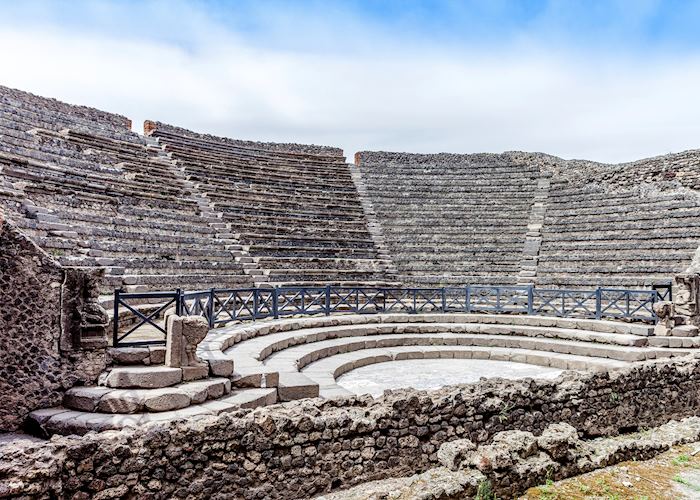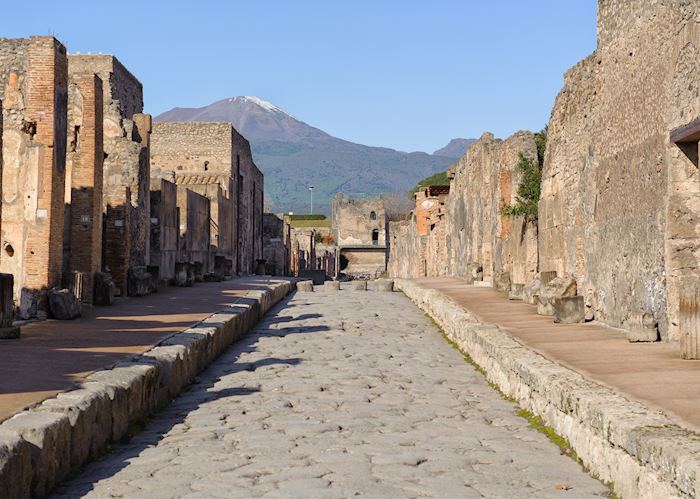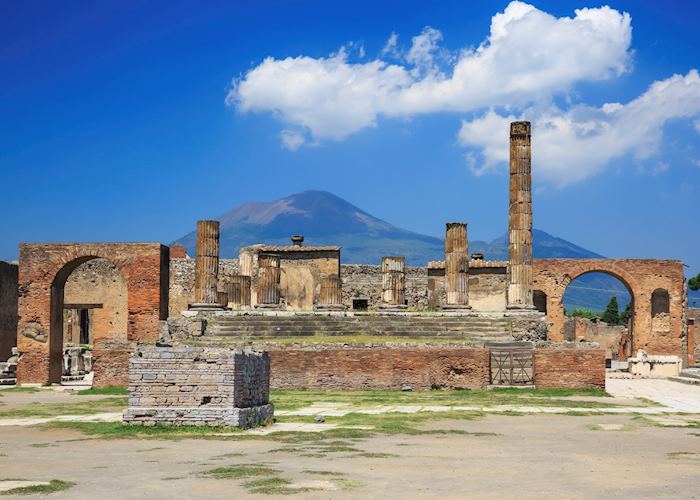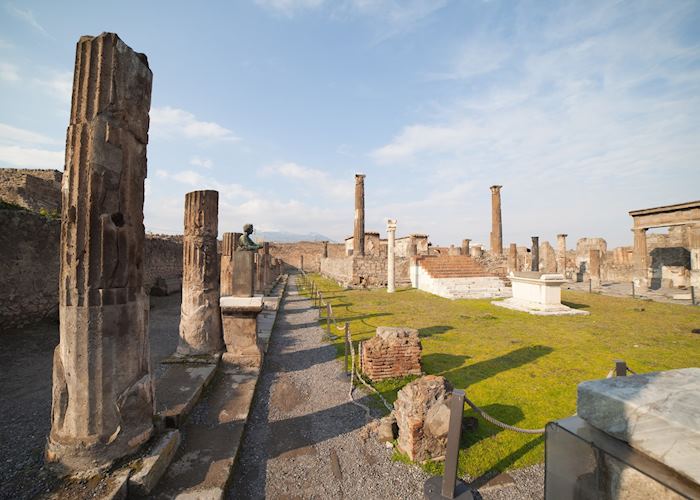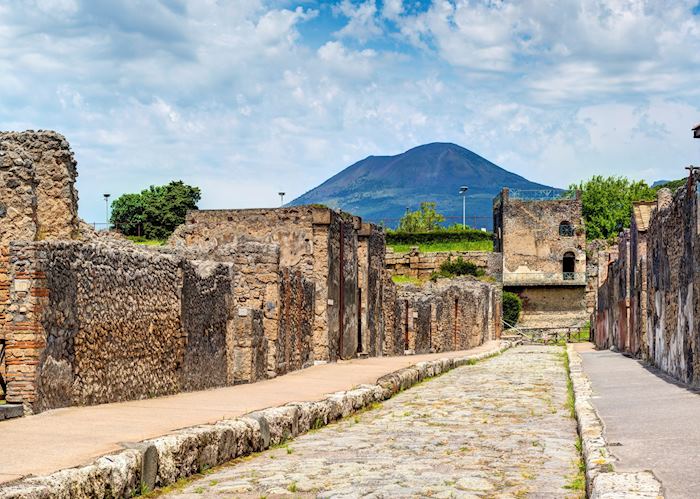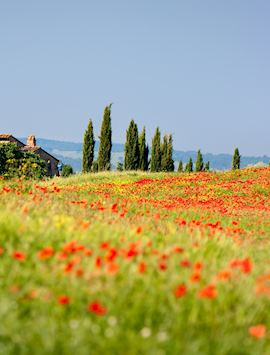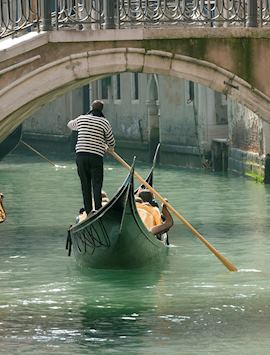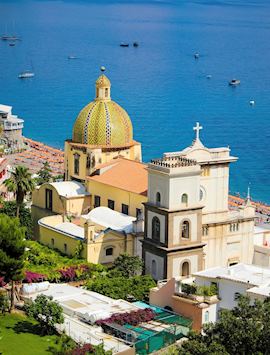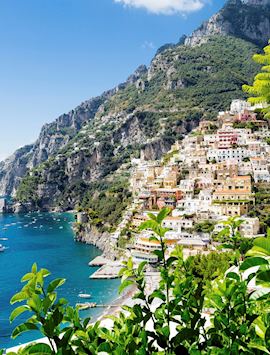Since Mount Vesuvius’ catastrophic eruption in 79 AD which both devastated and preserved the ancient Roman town of Pompeii, archaeology enthusiasts have flocked to the large site in order to immerse themselves in the world of a once prosperous commercial port.
The town itself is thought to date back to the 7th century BC. It was built by the Etruscans and later conquered by the Romans in 80 BC. After the eruption, it was buried by 6 m (20 ft) of volcanic ash and pumice which almost perfectly preserved the stone structures of the buildings, as well as some beautiful frescoes and mosaics.
Arguably one of the most famous Roman ruins in Europe, the sheer size of the site, and the details of daily life that can be seen here, are enough to astonish any visitor. Pompeii has UNESCO World Heritage Site status and highlights include well-preserved baths, a huge arena where ancient games were held, and numerous frescoes.
Plaster casts have been made of bodies twisted in pain, or clutching their loved ones. They capture the horror of the eruption. The excavations began in earnest in 1748, and are still going on to this day.


